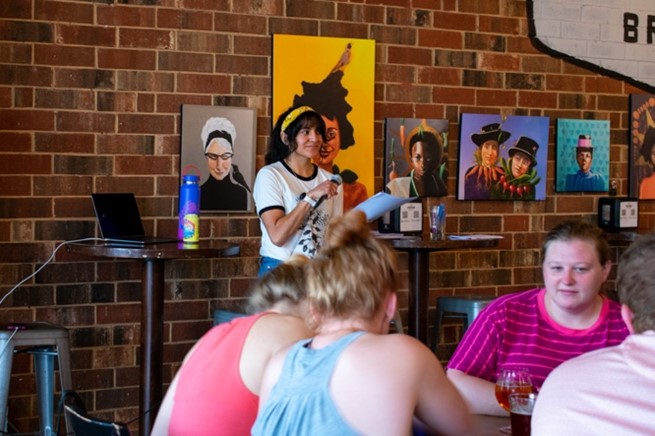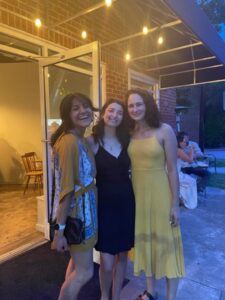
Howdy! My name is Ana Jafarinia and I am a current MPH student in the Global Health concentration. Before coming to UNC, I actually got my BS in mechanical engineering and worked in a corporate setting. Through a winding and unconventional road, I began to realize that my career trajectory was not one where I would find fulfillment or purpose. I made the decision to make a big switch and I am so grateful that Gillings gave me the opportunity to do so. The first year of my program has been delightful. As someone who is new to public health, I have enjoyed being introduced to new fields, new people, and new ways of thinking.
But the engineer in me still lives on! This past year, my love of numbers has continued to guide my work, albeit in a different discipline than I thought. One of the ways that I have used math and science in public health is through statistics. I really enjoyed Data Analysis for Public Health (SPHG 711), one of the first semester MPH core classes that we take. I decided to further develop those skills in my second semester by taking Working with Data in a Public Health Research Setting (BIOS 669). I learned how to use SAS to perform data manipulations.
My love of data is how I ended up finding my practicum. Dr. Ilene Speizer had a colleague in Pakistan with survey data that he wanted to make sense of. Ilene, knowing that I was passionate about statistics, asked if I would be interested. I am incredibly grateful to have been welcomed to Dr. Adnan Khan’s team at Research and Development Solutions (RADS). The Pakistan-based research and evaluation group conducts rigorous analysis using multiple data sources to identify health issues in Pakistan and advocate for evidence-based policies. One of the biggest priority areas for them is Family Planning. The government of Pakistan has expressed a commitment to raising the contraceptive prevalence rate (CPR) to 50% by 2025. However, through past research, RADS has found that Pakistan’s CPR has stagnated around 30- 35% since 2007. Additionally, 1 in 4 married women of reproductive age in Pakistan experience an unmet need for family planning. My research will help generate more knowledge on the experiences of women who have an unmet need for family planning to hopefully advocate for effective policy solutions that meet those needs.

Doing quantitative research comes naturally to me. I love using the numbers to identify trends and associations. What is more difficult is seeing the numbers as individuals. The data I am using comes from the Pakistan Social And Living Standards Measurement (PSLM) Survey, which collects information on social indicators from households at the national level. The roster of all individuals represented by the dataset has 175,690 rows. I have used large datasets like this before, but often it is dummy data that is generated for classroom use. While looking at this data, I have tried to challenge myself to see each row not as a number but as a person with unique experiences.
For example, I was trying to identify the number of married women of reproductive age in each household. I decided to look at a certain household with more than one woman of reproductive age to get a better picture of what these households might look like. For household code “7301200104”, I found that one couple lived with their three children, as well as their son’s wife and four grandchildren.

I am naturally curious about other people and their experiences. I love meeting all different kinds of individuals and asking them about their lives. I would love to know more about this family and their relationships with one another. Unfortunately, the nature of quantitative research means I will never know the whole story for this one group. However, having that perspective and remembering what lies behind the numbers will help me as I conduct my analysis. While we must identify trends and work with the numbers we have, we must never simplify one person’s story into a group of variables.
Outside of my practicum, I have been spending the summer with my roommates Kate (Health Behavior concentration) and Andi (Maternal, Child, and Family Health concentration), as well as my church family at Love Chapel Hill. I have also been hosting the trivia for Vecino Brewery in Carrboro on Wednesday nights at 7pm. If you are local, please come by and play a couple of rounds!
Thanks for reading and until next time!
-Ana
